
The nuclear weapons taboo is undoubtedly weakening, but Moscow shouldn’t be the first to break it
By Fyodor Lukyanov, the editor-in-chief of Russia in Global Affairs, chairman of the Presidium of the Council on Foreign and Defense Policy, and research director of the Valdai International Discussion Club.
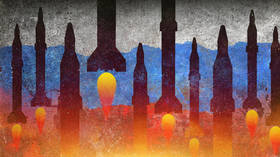
© Getty Images / mammuth
Professor Sergey Karaganov’s “Tough-but-necessary decision” article – which claims that by using its nuclear weapons, Russia could save humanity from a global catastrophe – has provoked plenty of reaction both at home and abroad. This is partly due the author’s status – he has been an advisor to both President Boris Yeltsin and President Vladimir Putin – and also because of the belief that his opinion may possibly be shared by some people in positions of power.
Fyodor Lukyanov, widely regarded as Russia’s top contemporary foreign policy expert, provides his response.
***
Sergey Karaganov’s article, arguing that “the use of nuclear weapons could save humanity from global catastrophe” has provoked a strong reaction. This was probably the author’s intention.
Public debate on the permissibility of using atomic bombs has been taboo since the United States dropped two on Japan. The consequences of those attacks are well known.
Relations between the nuclear superpowers in the last century were based on the assumption that any use would lead to all out war and the destruction of civilization. The certainty of the inevitability of such a scenario and the fear of its realization meant that atomic bombs were not considered to be battlefield weapons.

Read more
Instead, they were regarded as a deterrent – both to the enemy and to “hotheads” at home. Thus, when someone dares to question whether we need to return them to the status of a conventional weapon, it causes shock and indignation. No matter how powerful the call.
Your humble servant is not, and does not claim to be, an expert on nuclear weapons and the principles of deterrence. But the issue raised by my senior colleague [the original article was published in Russian in Global Affairs, where I am editor and Professor Karaganov is the publisher] affects everyone, so I will venture to speculate from the position of an informed layman.
Deterrence as a child of its time
Karaganov’s arguments can be judged on their own merits, especially as they range from the practical to those which are an article of faith. One thing is indisputable – the risk of nuclear war is higher today than at any time since the early 1960s. The reasons for this are both the general increase in aggressiveness in international politics and the strategic carelessness resulting from thirty years of relative peace under American hegemony. Add to this the disbelief that a full-blown nuclear war can really happen, which has led to existential fear removing itself from the equation.
The latter is the starting point for Sergey. Only the return of the real fear of a nuclear apocalypse can sober Western elites who are prepared to impose their hegemony on the rest of the world by force, no matter what. The aim stated in the article is to “break the will” of the collective West by forcing it to abandon its quest for supremacy. The last resort is to launch a nuclear strike against “a group of targets in a number of countries.”
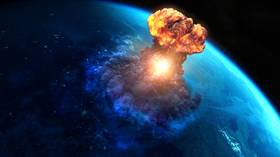
Read more
Let’s leave aside the moral aspect, which is clear – the author himself acknowledges the monstrosity of the proposed action. Let us concentrate on the conceptual scheme, to the extent that it might be effective in encouraging people to sober up.
Nuclear deterrence and Mutual Assured Destruction (MAD) are a product of the political and technological development of the second half of the twentieth century – the post-World War II era. It was a unique period of relative order in international relations, based on a system of institutions. This made it possible to regulate the interaction between the main actors, primarily the two superpowers, which were the US and the erstwhile Soviet Union.
The existence of an approximate military-political, economic and ideological equilibrium was cemented by the nuclear factor – first by the emergence of nuclear weapons in the USSR, then by the achievement of Soviet-American parity, in this regard. The degree of order should not be exaggerated, but there was more of it than we had ever seen before, and probably will see again.
Crisis of the old order
The end of the Cold War meant that this equilibrium – in most parameters – disappeared, but the institutional framework remained unchanged. It was assumed that there was no need to rebuild it because, in the absence of confrontation, the institutions would finally function as they should. The nuclear factor also remained unchanged and the MAD principle was maintained even during the period of maximum Russian weakness in the first years after the collapse of the USSR.
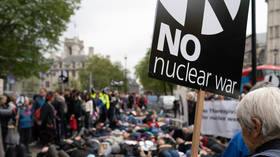
Read more
In practice, the effectiveness of the institutions created in the last century, which were effective back then, began to decline rapidly as their mechanisms were designed for a different balance of power and interests. In theory, a different infrastructure of international organizations should have been discussed and agreed. But the victorious West did not consider this necessary. After all, the very system of institutions, starting with the UN, originally embodied American ideas. The Soviet Union agreed to them after the Second World War because it had no doubt that it would play a leading role in any design.
In other words, the sustainability of the world order of the second half of the last century was determined by the Western design and the balance of power within it provided by the USSR.
Without balance, the very fabric of the system began to unravel and crumble. Hence the dysfunction of structures – from the United Nations to many sectoral and regional institutions, including those that were purely Western, such as the WTO, which emerged from GATT. They cannot cope with the heterogeneity of the world. Against this background, other types of alliances are beginning to emerge, less formalized, with fewer participants, designed for a more flexible approach. A fixed world order is not to be expected in the foreseeable future. It will not be possible to regulate multilevel international disorder without a qualitative simplification of the picture. And that is exactly what is not expected, unless catastrophic scenarios are taken into account.
Deterrence as an institution
Nuclear deterrence is one of the fundamental institutions of the second half of the last century. It did not emerge overnight, but rather in the first decade and a half of the existence of nuclear weapons when America and the USSR tested the limits by provoking escalations. During the Cuban Missile Crisis of 1962, the leaders of the two nuclear superpowers – Nikita Khrushchev and John F Kennedy – faced this very fear. They definitively established the inadmissibility of direct conflict.
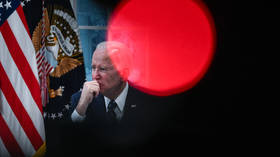
Read more
Nuclear weapons were indeed capable of destroying humanity, and the understanding of deterrence was seen as almost unbreakable. Different games could be played, but the existence of the planet itself could not be put at risk.
Sergey also wrote a few years ago that the depth and breadth of contradictions in international relations, in the current era, are such that in earlier times they would have led to a world war long ago. But the only thing that has been stopping such a turn of events is the presence of nuclear weapons.
However, now he has come to a different conclusion. The US is no longer afraid of waging a full-scale war against a nuclear superpower, even if it is being fought by someone else. As a result, it’s a short step to a world war that would inevitably be thermonuclear. Thus, it may turn out that the only way to avoid such a situation is to have a nuclear episode as a preventive measure, but just a local one.
It is reasonable to ask here why an atomic attack on another nuclear-armed state or bloc [in this case NATO] would not quickly escalate into the same thermonuclear all-out war, i.e. an exchange of fire between Russia and the US? The whole system of relations in the nuclear sphere, as the theorists of deterrence point out, is based primarily on psychology, not on strategy and technology. And this game is designed to discourage the enemy from even thinking about a possible nuclear attack.
The use of nuclear weapons means the end game and essentially nullifies their special role, turning them simply into a very powerful means of destruction. Competition to attack better is usually part and parcel of a “normal” war, but in this case it would be on a gargantuan scale. Mutual annihilation may not be guaranteed, but the overall damage would be such that the countries involved – and the world as a whole – would be radically and horribly altered.
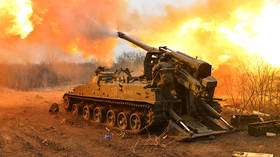
Read more
Can we get back to basics?
Emphasizing that nuclear strikes are a last resort, Karaganov expects that the mere move up the ‘escalation ladder’ will make the other side realize the level of threat and move on to a substantive conversation – how to begin to settle the conflict and resolve the contradictions. That is, he believes it is possible to return to the original institutional raison d’être of nuclear weapons – the presence of absolute fear that constrains the behavior of the participants to a stand-off.
However, as mentioned above, it was then part of the overall system of balanced management of international processes. Yes, it can be said that the existence of this system was largely determined by the existence of nuclear weapons, but it was not exhausted by this factor. And when other elements of the construct began to fall away after the Cold War, it appeared that nuclear deterrence as such was not sufficient to ensure the former behavioral constraints.
The assumption here is that a system of mutually acceptable rules can be re-established with the help of fear, based on the build-up of an existential threat. This logic was applied on a lesser level in December 2021, when Russia issued ultimatums on long-term security guarantees, threatening “military and technical measures” in case of refusal. The nature of these measures was revealed with the launch of the military operation on Ukrainian territory which shocked Western elites, who had treated the ultimatum with contempt. It did not, however, lead to a willingness to enter into a discussion with Russia about its concerns; the opposite was the case.
One could argue that the comparison is flawed because the US and its NATO allies are not directly threatened by the Ukraine conflict, whereas nuclear escalation is another matter entirely. But this is where the very elites whose irresponsibility Karaganov deplores come into play. Whatever one thinks of them, they have so far demonstrated a mastery of managing public opinion and mobilizing support for their policies. Even if, objectively, these policies are detrimental to the welfare and security of their citizens.

Read more
The plan, it turns out, is to return nuclear deterrence to its status in the second half of the twentieth century by raising the threat level. And to bring back the kind of elites who were in power then. Something romantic and nostalgic. It is unclear where such a cadre could be found today – just look at the alternative forces in leading Western countries. All the more so since, apart from everything else, legitimizing the use of nuclear weapons in the eyes of anyone outside the obvious situation described in doctrinal documents (a threat to the existence of the state) seems an impossible task.
Do we have to detonate it?
Immediately after the Americans detonated the atomic bomb in 1945, George Orwell wrote a short essay entitled You and the Atomic Bomb. He had no doubt that others (at least Moscow and Beijing) would acquire it, and if it remained not only super-destructive but also hard to get and very expensive, it might do some good by putting an end to large-scale wars at the cost of prolonging indefinitely a “peace that is no peace.” In other words, Orwell understood from the outset that the point of this invention was not its application, but the mere specter of its existence For Orwell, to turn it into another “mere weapon” risked plunging the world into barbarism and the end of the nation-state as a form of organization.
Nuclear weapons are now increasingly accessible, both technologically and materially. Is thinking about the likelihood of their use the prerogative of Russian minds alone, seeking a way out of a difficult military-strategic situation? Certainly not. Speculation on this subject is gradually filling the world’s public space. This confirms what I said above that the institution of deterrence, like other institutions of the last century, is in crisis. A sharp increase in the level of debate will not lead to the strengthening of the system, but rather to its ultimate collapse. And use would not be a means of forcing a change of heart, but a formal lifting of a general taboo with little predictable consequences. Further action would no longer be dictated by calculations of one kind or another, but by the reactions of the other to each successive move. The game of nuclear peek-a-boo is a gamble. But if it fails, the net damage would be multiples worse than any hypothetical benefits.
The taboo on the use of nuclear weapons is undoubtedly weakening. So, as a result, we have to be prepared for anything. The rational behavior here is not to break the taboo definitively, preemptively, but to try to maintain it, at least as a kind of restraint. This does not mean that the subject should not be broached. Sanctimoniously scowling at the very thought of it is an ostrich-like approach. In this sense, Karaganov should be thanked for such a straightforward presentation of his position. Its discussion should be part of the development of a new concept of strategic stability to replace the one that can no longer be repaired.




